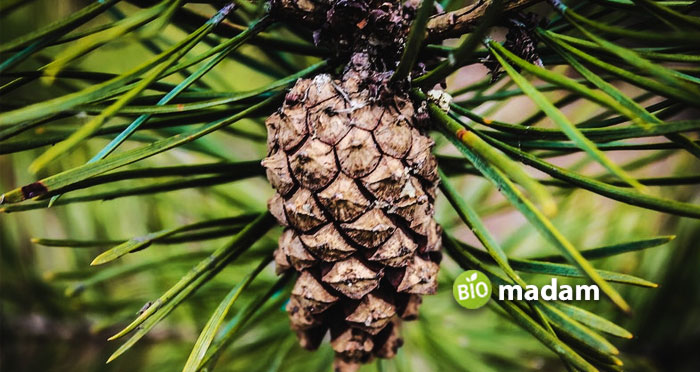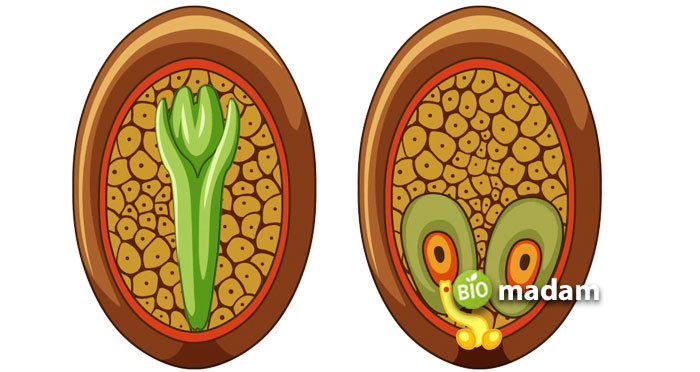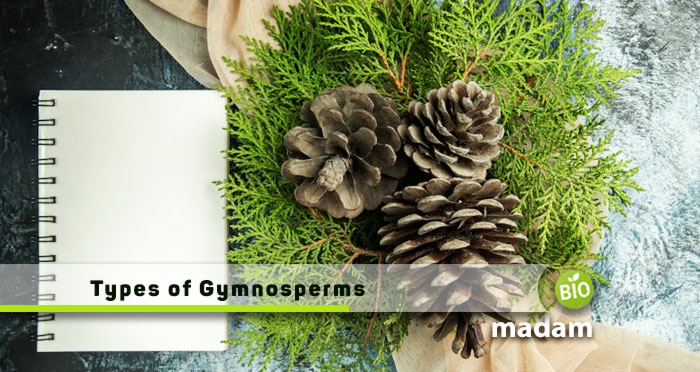Gymnosperms are flowerless plants that produce cones and seeds. The term gymnosperm literally means “naked seed,” as gymnosperm seeds are not encased within an ovary. Instead, they sit exposed on the surface of leaf-like structures called bracts. They are vascular plants of the subkingdom “Embryophyta” and include conifers, cycads, ginkgoes, and gnetophytes.
Keep reading to know about types of gymnosperms.
What are Gymnosperms?
In all living gymnosperm groups, the visible part of the plant body (i.e., the growing stem and branches) represents the sporophyte, or asexual, generation, rather than the gametophyte, or sexual, generation.
Typically, a sporophyte has a stem with roots and leaves and bears the reproductive structures. As vascular plants, gymnosperms contain two conducting tissues, the xylem and phloem. The xylem conducts water and minerals from the roots to the rest of the plant and provides structural support. The phloem distributes the sugars, amino acids, and organic macro and micro nutrients manufactured in the leaves to the non photosynthetic tissues of the plant.
Some of the most recognizable examples of these woody shrubs and trees include pines, spruces, firs, and ginkgoes. Gymnosperms are abundant in temperate biomes and ecosystems. These species can tolerate moist or dry conditions.
Classification of Gymnosperms
Today, over one thousand gymnosperms species belong to four genera: Coniferophyta, Cycadophyta, Ginkgophyta, and Gnetophyta. They are categorized on their characteristics that enable them to survive in specific environmental conditions.
Cycadophyta
The Cycadophyta division of gymnosperms includes cycads. Cycads are found in tropical forests and subtropical regions. These evergreen plants have a feather-like leaf structure and long stems that spread the large leaves out over the thick, woody trunk. At first glance, cycads may resemble palm trees, but they are unrelated. These plants can live for many years and have a slow growth process. The King Sago palm, for example, may take up to 50 years to reach 10 feet.
The cyanobacteria colonize the roots of cycads. These microbes produce certain poisons and neurotoxins that accumulate in the plant seeds. The toxins are thought to protect against bacteria and parasites. Cycad seeds can be dangerous to pets and humans if ingested.
Coniferophyta
The Coniferophyta division contains conifers, which have the greatest variety of species among gymnosperms. Most conifers are evergreen (retain their leaves throughout the year) and include some of the largest, tallest, and oldest trees on the planet. Examples of conifers include pines, sequoias, firs, hemlock, and spruces. Conifers are an important economic source of lumber and products, such as paper, developed from wood. Gymnosperm wood is considered softwood, unlike the hardwood of some angiosperms.
Conifers are conspicuous members of the taiga forest biome and have adaptations for life in the cold environment of boreal forest ecosystems. The tall, triangular shape of the trees allows snow to fall from the branches more readily and prevents them from breaking under the weight of the ice. The needle-leaf conifers also have a waxy coat on the leaf surface to help prevent water loss in the dry climate.

Ginkgophyta
Ginkgo biloba is the only surviving plant of the Ginkgophyta division of gymnosperms. Today, naturally-growing ginkgo plants are exclusive to China. Ginkgoes can live for thousands of years and are characterized by fan-shaped, deciduous leaves that turn yellow in autumn. Ginkgo biloba is quite large, with the tallest trees reaching 160 feet. Older trees have thick trunks and deep roots.
Ginkgoes thrive in well-sunlit areas that receive lots of water and have plenty of soil drainage. Like cycads, ginkgo plants produce either male or female cones and have sperm cells that swim toward the egg in the female ovule. These durable trees are fire-resistant, pest-resistant, and disease-resistant. They produce chemicals thought to have medicinal value, including several flavonoids and terpenes with antioxidant, anti-inflammatory, and antimicrobial properties.
Gnetophyta
The gymnosperm division Gnetophyta has a small number of species (65) found within three genera: Ephedra, Gnetum, and Welwitschia. Many species from the genus Ephedra are shrubs that can be found in desert regions of the Americas or the high, cool regions of the Himalayan mountains in India. Certain Ephedra species have medicinal properties and are the source of the decongestant drug ephedrine. Ephedra species have slender stems and scale-like leaves.
Gnetum species contain some trees, shrubs and bushes, but most are woody vines that climb around other plants. They inhabit tropical rainforests and have broad, flat leaves resembling flowering plants’ leaves. The male and female reproductive cones are contained on separate trees and often resemble flowers, though they are not. The vascular tissue structure of these plants is also similar to that of flowering plants.
Seeds of Gymnosperms
The seed is formed by the maturation of the ovule in the seed plant. In fact, the seeds represent a portion of the life cycle involving 3 generations of plants (mother sporophyte, megagametophyte, and new sporophyte or embryo). Unlike angiosperms (= “encased seeds”), gymnosperms are all grouped together because the seeds are “unprotected” or naked, which is exposed on the surface of bracts.

The oldest known seed-like structures are from the late Devonian period, around 360 million years ago. Seeds seem to be one of the factors responsible for the dominance of seed plants in today’s flora. They have a survival factor the embryo is protected, and the stored food that is available is critical and gives them a great selective advantage over free-sporing plants.
Pollination in Gymnosperms
Water is no longer required for sperm to unite with egg; instead, the partly developed male gametophyte (= pollen grain) is transferred to the vicinity of a female gametophyte within the ovule directly. Thus, the flagella on sperm is eventually lost within the gymnosperms. Except for the cycads and some gnetophytes, pollination in gymnosperms takes place by wind.
The Bottom Line
Angiosperms and gymnosperms are two classifications of plant further divided into other phylum. Gymnosperms are seed-producing plants that have naked seeds and not produce flowers. They are thought to be among the most primitive vascular plants. They reproduce sexually through exposed seeds or ovules. The four main types of gymnosperms Coniferophyta, Cycadophyta, Ginkgophyta, and Gnetophyta comprise around a thousand species and subspecies. The most common examples of Gymnosperms include pines, spruces, firs, and ginkgoes.

Hello, I would like to introduce myself to you! I am Chelsea Rogers, an experienced blog writer for science articles, holding an MPhil degree. My enthusiasm to grab the best knowledge, let it relate to botany, zoology, or any other science branch. Read my articles & let me wait for your words s in the comment section.

